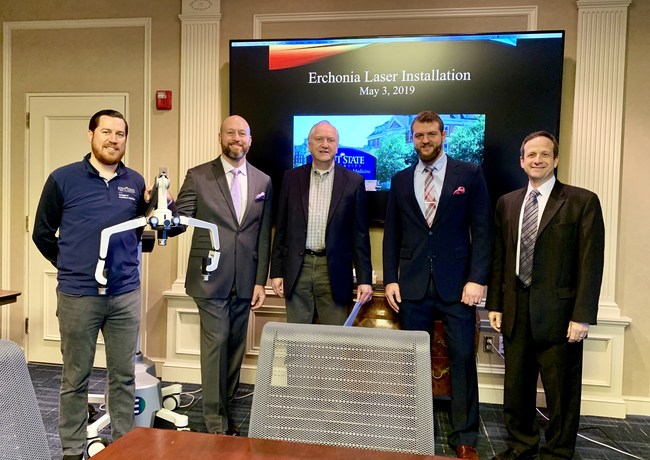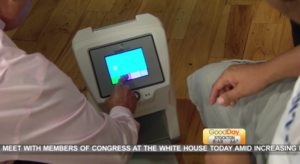
“We’re hopeful our partnership with InnerScope can make a real difference in patients’ lives and eventually provide a scientifically-proven, non-invasive option.”
Melbourne, FL (PRWEB) NOV 07, 2018
Erchonia Corporation, the global leader in the manufacturing and development of low level laser therapy technology (“3LT”), today announces a joint development agreement with InnerScope Hearing Technologies. Under the agreement, Erchonia and InnerScope will conduct clinical research and trials for the purpose of obtaining 510(k) clearances from the FDA for 3LT devices to treat hearing-related conditions, including tinnitus.
Erchonia and InnerScope expect to be the first to receive 510(k) clearance from the FDA for a treatment protocol for relief of tinnitus symptoms — not tinnitus “maskers” or management devices which are the only currently available options for patients. The companies have already received approval under FDA regulations from the Institutional Review Board for their initial clinical trial.
Commonly referred to as “ringing in the ears,” tinnitus is the perception of sound when no actual external noise is present. Approximately 20 percent of the world’s population suffers from tinnitus, experiencing buzzing, hissing, whistling, swooshing, or clicking. Those with intolerable tinnitus also often suffer from higher rates of anxiety, depression, low self-esteem, and poor quality of life.
“We’re looking forward to exploring low level laser’s impact on hearing disorders, especially on tinnitus, which can be debilitating,” says Steve Shanks, president of Erchonia Corporation. “We’re hopeful our partnership with InnerScope can make a real difference in patients’ lives and eventually provide a scientifically-proven, non-invasive option.”
For more information on the partnership, please visit https://www.erchonia.com.
About Erchonia Corporation
Based in Melbourne, Florida, family-owned Erchonia is the global leader in the manufacturing and development of low level laser therapy technology (“3LT”). From humble beginnings in a garage in 1996, Erchonia today develops and sells the most advanced, non-invasive 3LT medical equipment on the market in over 50 countries. With more than 15 clearances from the FDA, Erchonia remains passionately committed to effective, research-based 3LT solutions for a wide variety of conditions — from managing chronic pain to promoting fat loss. For more information, please visit https://www.erchonia.com.
About InnerScope Hearing Technologies
InnerScope Hearing Technologies (INND) is a rapidly expanding consolidator of the hearing aid industry. Management is applying decades of profitable industry experience and technology to an antiquated and disjointed industry, unlocking scale and efficiency, which will serve all of InnerScope’s stakeholders. Its direct-to-consumer model is revolutionizing the industry with its Walmart.com relationship representing a paramount shift in the consumption of hearing aids by the hearing impaired. In addition InnerScope plans to continue to open, acquire, and operate a physical chain of audiological and retail hearing device clinics. InnerScope’s mission is to serve approximately 1.2 billion people around the globe that are suffering with 25 db or greater hearing loss across the entire hearing impaired vertical from R&D and manufacturing through direct consumer sales and services. For more information, please visit http://www.innd.com.



